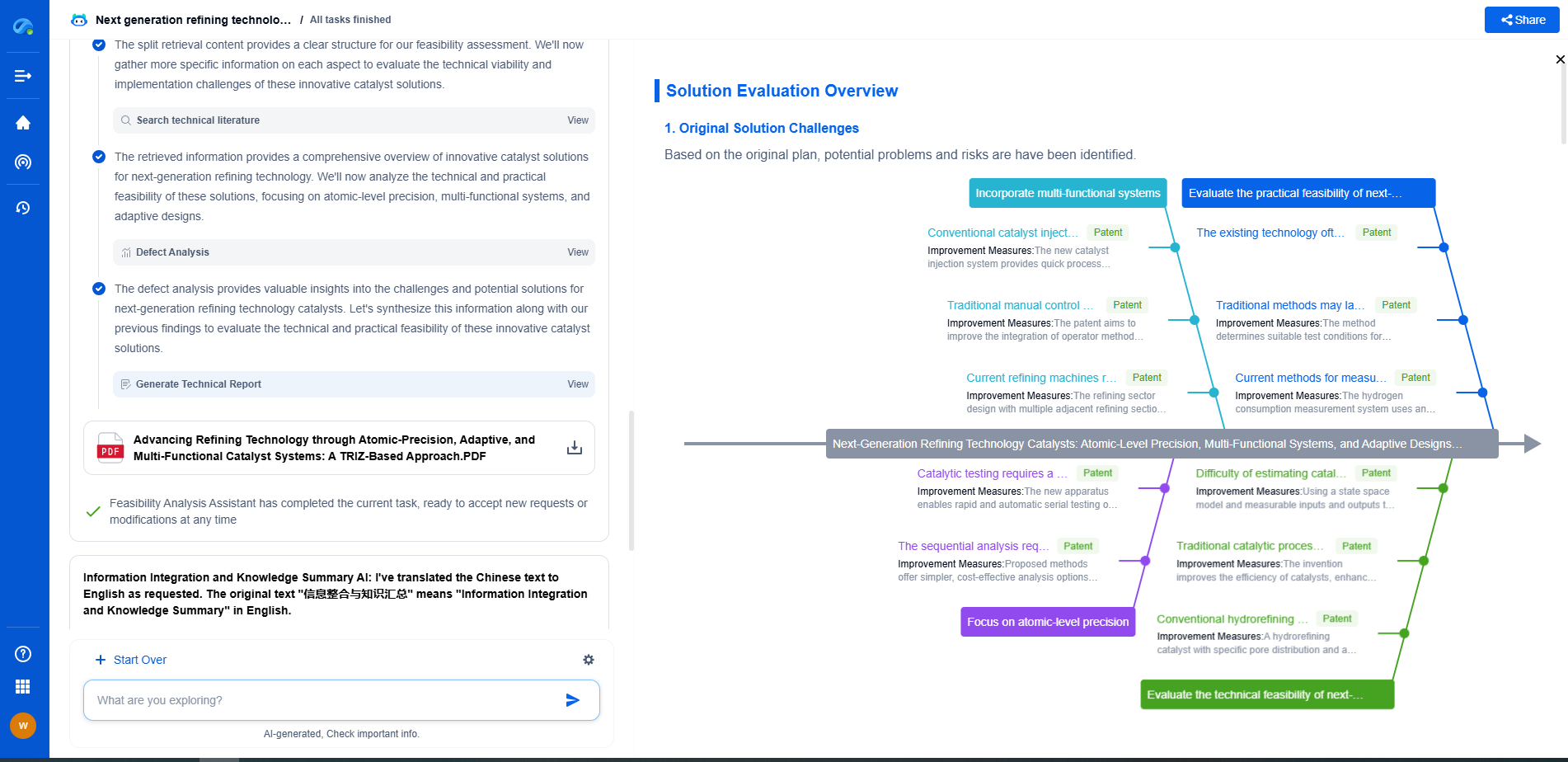Prismatic Joint Actuators: Ball Screws vs. Linear Motors Compared
JUN 26, 2025 |
Prismatic joint actuators are vital components in various mechanical systems, especially in robotics and automation, where linear motion is required. These actuators facilitate precise control of movement in a straight line, which is crucial for tasks like pick and place operations, CNC machinery, and robotic arms. Two of the most popular types of prismatic joint actuators are ball screws and linear motors. Each of these has distinct characteristics, advantages, and limitations that make them suitable for different applications.
Basics of Ball Screw Actuators
Ball screw actuators are mechanical devices that convert rotational motion into linear motion. They consist of a screw shaft and a nut, with ball bearings riding between them to reduce friction and increase efficiency. The rolling motion of the balls minimizes the frictional forces that would otherwise hinder movement, allowing for smoother and more precise linear motion.
Advantages of Ball Screw Actuators
1. High Load Capacity: Ball screws can handle substantial loads, making them suitable for heavy-duty applications where significant force is required.
2. Precision and Accuracy: With high mechanical efficiency, ball screw actuators provide precise motion control, which is critical in applications like CNC machining.
3. Mechanical Advantage: The design of ball screws offers a mechanical advantage that translates into less torque being required to achieve the desired motion, improving energy efficiency.
Limitations of Ball Screw Actuators
1. Maintenance Requirements: Ball screws require regular maintenance, including lubrication and adjustments, to maintain optimal performance.
2. Wear and Tear: Over time, the mechanical components can wear out, affecting accuracy and requiring replacement.
3. Speed Limitations: Ball screws have limitations regarding maximum speed due to their reliance on mechanical components.
Exploring Linear Motor Actuators
Linear motors are electromechanical devices that generate movement in a straight line without the need for mechanical contact, like gears or screws. They operate on the principle of electromagnetic force, where a moving magnetic field induces motion in a conductor. This results in a direct conversion of electrical energy into linear motion.
Advantages of Linear Motor Actuators
1. High Speed and Acceleration: Linear motors can achieve high speeds and rapid acceleration, making them ideal for applications requiring quick and dynamic movement.
2. Low Maintenance: With fewer mechanical parts, linear motors generally require less maintenance than ball screws, reducing downtime and maintenance costs.
3. Smooth and Quiet Operation: The absence of mechanical contact results in smoother and quieter operation, reducing noise and vibration in sensitive applications.
Limitations of Linear Motor Actuators
1. Limited Load Capacity: While linear motors excel in speed, they may not handle as high loads as ball screws, limiting their use in heavy-duty applications.
2. Cost: The advanced technology and materials used in linear motors can make them more expensive than traditional ball screw systems.
3. Complexity: The integration of linear motors into existing systems can be more complex, requiring specialized knowledge and components.
Comparative Analysis: Choosing the Right Actuator
When deciding between ball screws and linear motors for prismatic joint actuators, several factors should be considered:
1. Application Requirements: Assessing the specific needs of the application, such as load capacity, speed, precision, and environmental conditions, is crucial. Ball screws are advantageous for applications prioritizing load capacity and precision, while linear motors are better for high-speed and low-maintenance needs.
2. Cost Considerations: While initial costs may be higher for linear motors, the reduced maintenance and operational efficiency can lead to cost savings over the long term. Conversely, ball screws offer a more cost-effective solution upfront but may incur higher maintenance expenses.
3. System Complexity: Consider the complexity of integrating the actuator into existing systems. Ball screws are generally easier to integrate, while linear motors may require additional expertise and infrastructure.
Future Trends and Innovations
Both ball screws and linear motors continue to evolve with advancements in technology. Innovative materials, improved designs, and enhanced control systems are leading to actuators that offer greater efficiency, durability, and performance. Understanding these trends and remaining informed about the latest developments can help engineers and designers make informed decisions when choosing between these two types of prismatic joint actuators.
Conclusion
In summary, the choice between ball screws and linear motors for prismatic joint actuators depends on a variety of factors, including application needs, cost, and system complexity. Ball screws provide high load capacity and precision, making them suitable for demanding tasks, while linear motors offer high speed and low maintenance with a smooth operation. By carefully considering these factors, engineers can select the appropriate actuator to optimize performance and efficiency in their systems.
Ready to Redefine Your Robotics R&D Workflow?
Whether you're designing next-generation robotic arms, optimizing manipulator kinematics, or mining patent data for innovation insights, Patsnap Eureka, our cutting-edge AI assistant, is built for R&D and IP professionals in high-tech industries, is built to accelerate every step of your journey.
No more getting buried in thousands of documents or wasting time on repetitive technical analysis. Our AI Agent helps R&D and IP teams in high-tech enterprises save hundreds of hours, reduce risk of oversight, and move from concept to prototype faster than ever before.
👉 Experience how AI can revolutionize your robotics innovation cycle. Explore Patsnap Eureka today and see the difference.
- R&D
- Intellectual Property
- Life Sciences
- Materials
- Tech Scout
- Unparalleled Data Quality
- Higher Quality Content
- 60% Fewer Hallucinations
Browse by: Latest US Patents, China's latest patents, Technical Efficacy Thesaurus, Application Domain, Technology Topic, Popular Technical Reports.
© 2025 PatSnap. All rights reserved.Legal|Privacy policy|Modern Slavery Act Transparency Statement|Sitemap|About US| Contact US: help@patsnap.com

